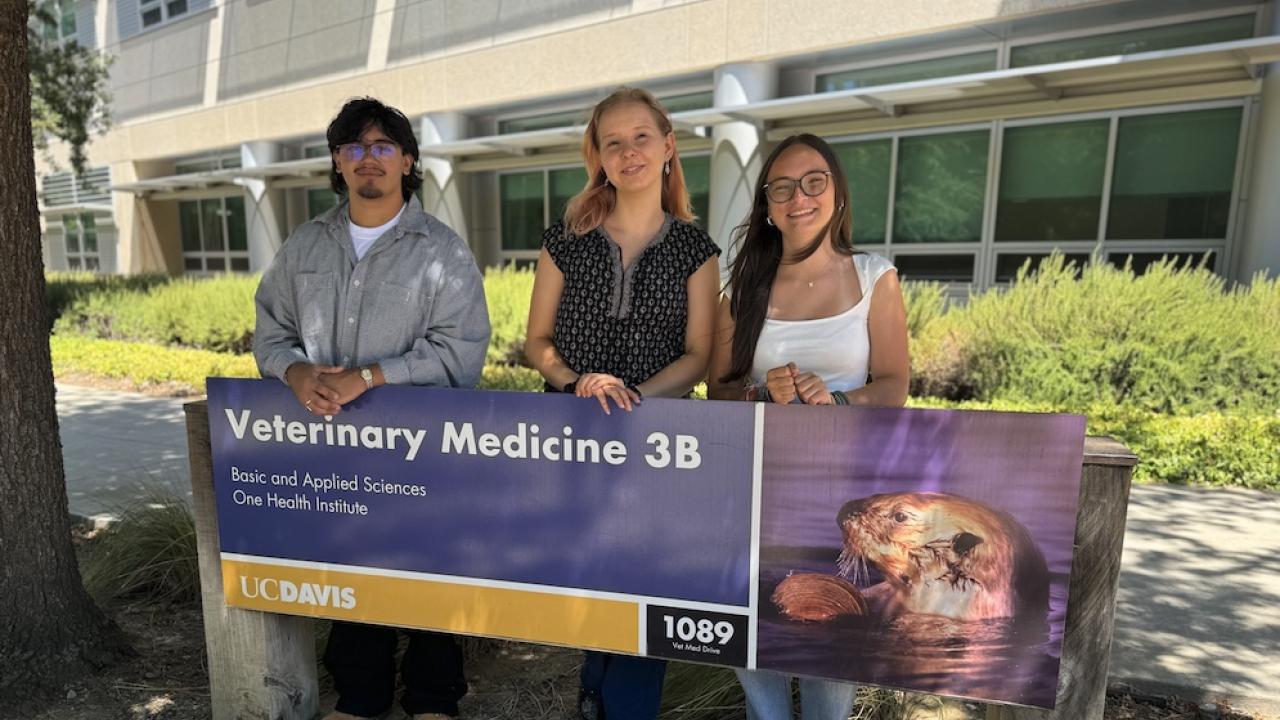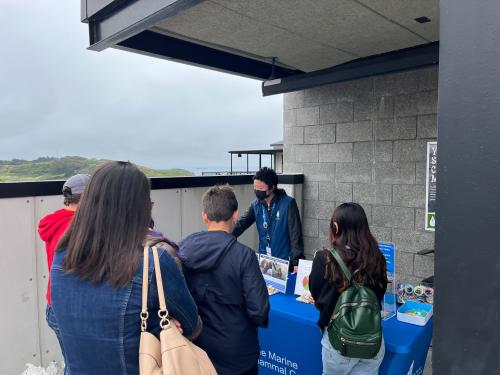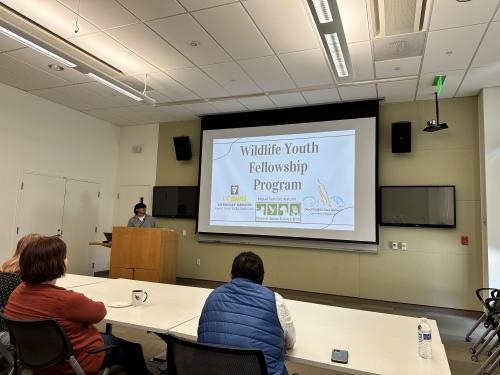
Breaking Barriers: The Wildlife Health Youth Fellowship
Growing up in San Francisco, I first encountered the term "domoic acid poisoning" in 1998 when The Marine Mammal Center diagnosed the first cases of this condition in California sea lions. I was 17 years old and eager to help. Driven by a passion for wildlife, I reached out to the Center, attended an orientation, and secured a spot on their Wednesday Day Animal Care Volunteer Crew. Every week, I made the 2.5-hour journey from San Francisco’s Mission District out to the Marin Headlands. It took two buses and a ride from long-time volunteer Stan Jensen to reach my destination. My first few shifts were exhilarating, but as time went on, I faced a tough reality—my volunteer work at the Center was no longer feasible. I needed income for household expenses and couldn’t afford to volunteer any longer. I swapped out my volunteer work with sea lions for a dog grooming job, but never lost my passion for pinnipeds.
Fast forward 27 years, and one of my favorite programs to be involved in is the Wildlife Health Youth Fellowship (WHYF). This incredible initiative is making a profound impact on the wildlife health field by providing opportunities for high school students from under-recognized backgrounds to engage in stipend-supported volunteer work at wildlife rehabilitation centers.
In many communities, financial, cultural, and logistical barriers make it difficult for students from underserved backgrounds to pursue careers in wildlife health. These barriers include a lack of access to information about the field, and an absence of cultural representation that may deter students from considering wildlife health careers. Many students juggle school, work, and family responsibilities, leaving little time to volunteer in a field that is often volunteer-driven. Additionally, wildlife rehabilitation centers may be located in areas that are not easily accessible by public transportation, and owning a car is a luxury that many students can't afford. For others, caregivers may be hesitant to allow their children to participate in activities away from home, especially if they are unfamiliar with the programs.

The WHYF program strives to alleviate some of these immediate barriers, especially those related to financial hardship. By providing a stipend for meals, transportation, and work shifts, the WHYF provides opportunities for students from low-income, first-generation college-bound backgrounds to participate in meaningful wildlife health experiences. Now in its third year, the WHYF has already had a significant impact. Initially funded by a grant from the UC Davis One Health Institute’s (OHI) DEIA Competitive Grants Program, the WHYF has since grown. In its first year, two students participated in the Center’s Youth Crew experience. The following year, funding was supplied by the UC Davis Wildlife health Center (WHC) and additional students were placed with the Center and with the Peninsula Humane Society's Junior Volunteer Program. This year, the program expanded to include five students on The Marine Mammal Center’s Youth Crew with funding now shared between the UC Davis WHC and the Center.
As part of the WHYF program, students join animal care shifts where they work alongside staff and other volunteers to learn and provide proper husbandry for animals in care. They take on tasks such as washing equipment, preparing food, cleaning animal pens and pools, weighing animals, recording observations, managing animals in pens, and more. These hands-on experiences give students a deep understanding of the work involved in wildlife rehabilitation and conservation. At the Center, students also participate in education shifts, where they learn about marine conservation issues such as climate change and ocean pollution and then engage with the public, sharing their knowledge about ocean conservation and encouraging environmental stewardship.

A key element of the WHYF program is mentorship. Students are paired with mentors from the UC Davis OHI, who provide guidance and career advice, helping them navigate their educational and professional paths. Mentors meet with their mentees monthly to discuss wildlife conservation topics, extracurricular activities, and career options. As part of the program, students also deliver a Final Presentation to faculty and staff at UC Davis, showcasing their understanding of the issues they’ve explored throughout the fellowship.

For many students, participation in the WHYF has been transformative, opening their eyes to new possibilities and providing them with the confidence to pursue careers in wildlife health. By alleviating some of the immediate barriers of entrance into the wildlife health field, the WHYF opens a pathway not only for these students, but for broader, systemic change. Supporting students from diverse and underserved backgrounds fosters greater diversity and representation within the field. Representation matters. When students see people who look like them in these roles, they are more likely to believe that the field is accessible to them. This, in turn, creates a ripple effect—greater diversity leads to more inclusive research, more comprehensive conservation efforts, and a more diverse group of professionals who understand the needs and perspectives of different communities.
In the long term, this diversity will strengthen the field of wildlife health, helping to address global challenges such as climate change, ecosystem preservation, and human-wildlife conflicts. The more we broaden the reach of wildlife health programs like the WHYF, the more we promote understanding, appreciation, and a shared sense of responsibility for the health of our planet.
If you’re interested in learning more about the Wildlife Health Youth Fellowship, please visit The Wildlife Health Youth Fellowship website.

Lorraine
